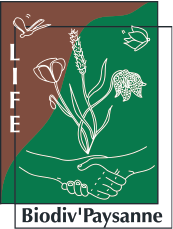What is biodiversity?
The word “biodiversity” comes from the contraction of the words “biological” and “diversity”. It represents the whole of the living tissue of the planet, the natural environments and the life forms (plants, animals, fungi, bacteria, viruses) as well as their interactions. Biodiversity therefore includes a great diversity of environments, of species, and a genetic diversity of individuals within the same species since we humans are all different.
This diversity of natural environments is characterised by six major types of ecosystems that we find in France and close to home. The rocky and high mountain ecosystems, which cover 2% of the surface of metropolitan France, are represented by the Alps, the Pyrenees, the Massif Central and the volcanoes of Auvergne, the Jura, the Vosges massif and Corsica. Marine and coastal ecosystems cover more than 10 million km², 97% of which are located overseas. France is also home to the fourth largest coral reef area in the world. Agricultural ecosystems are characterised by areas cultivated or exploited for agriculture, which cover 54% of the metropolitan area. We also find forest ecosystems, which represent 16.4 million hectares in metropolitan France, and 9 million hectares of essentially tropical, diverse and biodiversity-rich ultramarine forests. Continental wetlands and aquatic environments such as streams, wet meadows, ponds, marshes, reservoirs, mangroves, stagnant or flowing fresh or salt waters also cover a wide range. Finally, urban ecosystems located in cities, which are spaces of nature that can be very diverse: woods, wetlands, vegetable gardens, private gardens, etc.
iodiversity therefore offers us breath-taking natural environments in which we can relax, work and enjoy their resources as well as endemic and varied animal and plant species, which provide us with many services, called ecosystem services:
– The supply service: food (crops, livestock, fisheries, aquaculture, etc.), fibres (paper, cotton, hemp, etc.), combustible biomass (wood heating, cereals for ethanol production), fresh water, genetic resources (genes exploited to improve resistance to crops for example), biochemistry /natural medicines and pharmaceutical products.
– The regulatory service: air quality control (lakes used as sinks for industrial sulphur emissions), climate regulation (forests, peatlands, oceans capture and store carbon dioxide), water regulation (wetlands and alluvial plains retain water to combat the risk of flooding), erosion control (vegetation, grassland or trees prevent soil loss under the action of wind or rain and prevent silting of watercourses), water treatment and waste treatment (wetlands remove pollutants by trapping heavy metals and organic matter), disease control (some forests minimise the occurrence of stagnant water, mosquito proliferation areas, which reduces the incidence of malaria), pest control (predators such as bats, snakes, or toads feed on pests that attack crops), pollination (bees pollinate crops), natural hazard control (mangrove forests and coral reefs protect coastal areas from storm surges).
– The cultural service: leisure and eco-tourism (hiking, camping, safari, outdoor sports), ethical values (spiritual development from sacred lands or rivers, beliefs)
– The support service: nutrient cycle (decomposition of organic matter contributes to soil fertility), primary production (algae transform sunlight and nutrients into biomass thus forming the basis of the food chain of aquatic ecosystems), water cycle (transfer of water from soil to plants, from plants to air and from air to rain).
France is home to an exceptional natural heritage. With mainland France and its overseas territories, it is present on two continents and in all oceans except the Arctic. Unfortunately, biodiversity is deteriorating because of the impact of our human activities, which are exerting major pressures on nature. To continue to enjoy its benefits and services, it is important that we unite to protect it.














